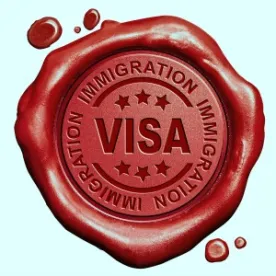April 1 is the first day thousands of U.S. employers will again file H-1B visa petitions hoping to secure one of the 85,000 visa numbers available for FY 2017 which begins on Oct. 1, 2016. If past history holds true, the United States Citizenship and Immigration Services (USCIS) will stop accepting applications a few days after the filing season starts on April 1 and will select applications that will be reviewed and adjudicated via lottery. It is important for organizations to identify all the individuals for whom they must/wish to file H-1B visa petitions and begin to gather the required documentation in order to allow sufficient time to prepare the applications and have everything ready to file with the USCIS on March 31, 2016.
Identify the employees for whom you need to file H-1B visa petitions. These employees may include:
-
Students who hold F-1 visa status and are working for you as authorized by their Optional Practical Training (OPT) work permission.
-
Certain L-1 Intracompany Transferees who do not qualify for green cards as multi-national managers. This would normally include those in L-1B status but also some L-1As. Even if you are not considering a green card for certain L-1Bs, an H-1B would buy them an additional year in the U.S. to the five years allowed in L-1B status.
-
Individuals in TN status for whom you wish to pursue green cards.
-
Prospective employees who are not yet working for you because no H-1B visas were available but for whom you have continued interest in employing them.
Specific issues related to F-1 students on OPT:
F-1 students on OPT are normally authorized to be employed for 12 months. Exceptions are those with STEM degrees who may be eligible for an additional 17 months of OPT if they meet certain requirements, including having a job offer from an employer who is enrolled in E-verify. Please note that the USCIS is subject to a court order mandating that certain revisions be made to the STEM OPT program. This may impact the continued availability of the STEM OPT extensions and has the potential for much more stringent and restrictive requirements. Further guidance is supposed to be given by the USCIS in February. As a general rule it is best to attempt a change of status to H-1B as soon as possible because in some cases this will ensure that the employee may get more than one chance if they are rejected the first time but qualified for an additional STEM extensions and can try again next year.
Who is not subject to the H-1B annual cap? Persons currently in H-1B status who have already been counted against the cap and are changing employers or need an extension.
An exception are individuals who, although already in H-1B status, work for a cap-exempt organization such as certain not-for-profits and educational institutions. Such individuals who wish to change jobs from a cap-exempt employer to a cap-subject employer, are subject to the annual H-1B visa cap.
Potential strategies for those not selected in the lottery:
-
Explore the possibility of a STEM extension.
-
Explore the possibility of a TN visa (Canadian and Mexican nationals), H-1B1 for Chile and Singapore or E-3 for Australians.
-
O visa for extraordinary ability aliens.
-
E visa if the company if foreign-owned and the candidate is of the same nationality.
Premium processing
The additional premium processing fee of $1,225 does not increase the chances of being selected in the lottery. However, the applicant will find out, usually in mid-May if the application was selected for processing and the approval will come usually by the end of May early June as opposed to many months later. This fee can be paid by the employer or the employee.



 />i
/>i

